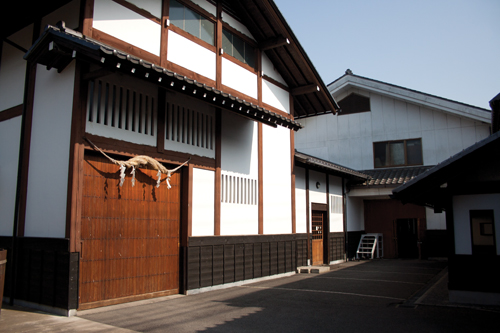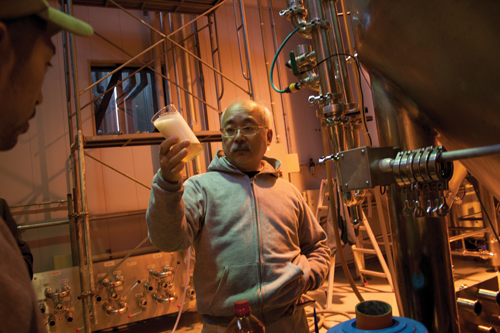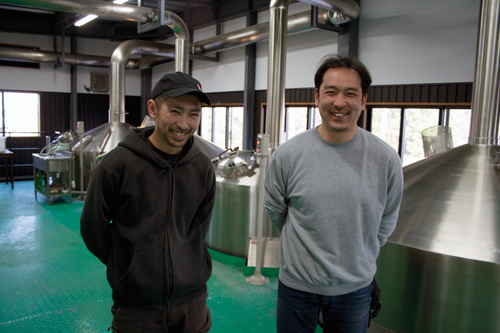by Ry Beville

Outside of Japan, Hitachino Nest is almost synonymous with Japanese craft beer. Kiuchi Shuzô (Kiuchi Brewery), the brewery behind the popular brand and its iconic owl logo, has focused much of its effort on overseas markets, after all. In America in particular, where consumers pronounce the brand with Anglicized stress—HEE-ta-CHEE-no—the brewery has done well against high-caliber competition. This is even more impressive considering Hitachino Nest is an import. Kiuchi’s beers must maintain quality during the long voyage and then sell at prices higher than American domestic craft. Many think that American craft beer in Japan is expensive. Hitachino Nest is just as expensive overseas and yet people are buying it up.
Other Japanese craft breweries, especially those looking to export more, probably owe Kiuchi a little thanks for delivering a consistently good product and not making a bad name for Japanese craft beer. But while a handful of Japanese craft breweries look to overseas markets for continued growth, Kiuchi is preparing to redouble its efforts to expand its presence in Japan’s domestic market.
It’s highly unlikely Kiuchi would make this move if it didn’t feel the time was right. This is a company that doesn’t seem to make mistakes and takes advantage of timely opportunities. Few people we know understand Japan’s craft beer history and business better than Kiuchi brothers Toshiyuki and Yoichi. Unsurprisingly, many craft brewers turn to them for advice on matters ranging from technical aspects of brewing to brewery finances.
The weight of tradition may also push them to succeed. Kiuchi is an eighth generation brewery with roots in sake, which it very much still brews along with other artisanal alcohol products. There’s a joke we commonly hear among such old sake breweries: nobody wants to be the son/daughter that makes the company fail and have to meet generations of angry ancestors in the afterlife.
Toshiyuki became director in 1986, shortly after graduating from university. Kiuchi was still a traditional sake company, though the beverage was in steady decline in Japan. When lawmakers opened up the beer industry to craft brewers in 1994, Toshiyuki saw an opportunity, noting, “Sake is a winter business and beer is a summer business.”
Kiuchi’s beer brewing division launched in 1996 with help from American brewer Mark Hammon, who was working for the equipment company Kiuchi was dealing with. Mark’s company figured that with his engineering background, he could help with both the set-up and brewing. On meeting the Kiuchi brothers, Mark took the job. Mark reminisces, “In the early days, it was very hectic; I was a one-man show.” Slowly, though, Kiuchi’s own team was learning the art and science.
The next year, the industry took a nosedive. Bad beer—though not Kiuchi’s—was ruining the market. Mark left. Kiuchi had to rely on its own strengths to move forward. The brewing team began tweaking Mark’s recipes and formulated its own original White Ale in 1999. The next year it took gold at the World Beer Cup.
2000 was a watershed year for Kiuchi because current head brewer Tani Koji also joined. Explains Tani, “I was a salesman but wanted a technique-driven job. I realized I wanted to work at a brewery and when I returned to town, I saw that Kiuchi was hiring. I took the interview and was hired.”
Tani started from zero, learning from the head brewer at the time as well as from Toshiyuki and whatever brewing books he could find. Toshiyuki had some connections with big breweries and was able to source valuable information from them on brewing. After about a year on the job, Tani began to tweak recipes a little.
“It was something we had to do anyway because new hops would come in and we had to keep changing the recipe to maintain consistency. We still have to do this today.”
At present, Tani claims they have about twenty recipes they regularly brew, grown from seven when he started. We’ve heard more than a few brewers call Tani one of Japan’s best, but he always demurs when it comes to his role, “At Kiuchi we all build our recipes together. We are very different from other breweries that have a brewmaster. We work together on the yeast in particular and try to use fresh yeast as much as possible.”
For a long, geeky hour we delve into some of those beers and recipes. Tani claims they have struggled a lot with the White Ale—and continue to do so. It’s a very delicate beer where the flavor changes significantly with minor tweaks and where mistakes are very apparent. The beer uses American ale yeast with coriander, nutmeg and oranges to impart its characteristically fruity flavor. The Red Rice Ale is another that presents difficulties in coaxing the color and flavor from the rice while avoiding any off-flavors. One of Kiuchi’s most popular beers, Nipponia, is a unique “Japanese ale” that doesn’t fit neatly into any style. Kiuchi first harvests rare Kaneko Golden barley, then sends it to England for malting before reimporting. That combined with Sorachi Ace hops produces its distinctive flavor. The Classic Ale, also popular overseas, is aged in cedar tanks traditionally used for sake. The woodiness strikes a wonderful balance with the hops.
And then there is Brooklyn Lager. Yes, as many in Japan know, Kiuchi has been the contract brewery for Brooklyn Lager draft in Japan since 2009. Brewing the flagship beer of one of the world’s best brewers may come with more than a little pressure but Kiuchi does a worthy job. Garrett Oliver has visited twice to work with Tani on ensuring that the brewery is doing everything right, from PH to IBU and color.
What are IBUs?
IBU refers to the International Bitterness Unit scale, which is an internationally accepted means of measuring and expressing the bitterness of a beer. Generally speaking, the higher the IBU, the bitterer the beer. Note that a malty body can mask hop bitterness, so a beer with lower IBU can sometimes taste bitterer. Also, there are limits to the human palate. Anything beyond 100 IBU is technically beyond measure and perception. Unless you have a frog tongue.
Brooklyn Brewery on Kiuchi Brewery
“We really respect Kiuchi and think they make fantastic beer. When the opportunity arose for them to brew some lager for us for a small group of customers, we realized they’d be able to recreate Brooklyn Lager in Japan. We knew we could trust their attention to detail and quality control. The partnership has worked out very well for us and we’re very proud to have Kiuchi brew our beer.”
All these great beers, however, hit a speed bump in 2011. At the time of writing, Kiuchi is the only brewery in Japan to have moved from a small brew house (2000 liter) to one of the larger ones (6000 liter) used by the likes of Echigo, Otaru Beer, Gotemba, Yo-Ho Brewing, Coedo and Karuizawa. Baird will soon be going bigger.
“We had to redo all the recipes after the leap,” Tani explains. “For starters, the color changed. It took us about two to three months to get a handle on things, but the new brew house is much better.”
After previously brewing three batches a day at a yearly production of 500 kiloliters, Kiuchi is now at about 1500 kiloliters and will surpass 2000 with the addition of some new tanks this year. This new brewery occupies some land not far from the original campus, where they still have their older brew house that they use for test batches, as well as a brew-on-premises system. This allows visitors to legally ‘homebrew’ some of their own beer (reservations required). It’s the only full program of its kind in Japan and is fun as well as educational for the consumer. The original brewery also houses a retail store selling all of Kiuchi’s alcohol products and an excellent restaurant specializing in Ibaraki’s famous local cuisine: soba noodles.
The brewery is relatively remote, but thankfully, Kiuchi has opened its own brewpub, True Brew, inside bustling Mito Station, allowing fans to try most of their line-up on draft. Meanwhile, overseas, Kiuchi now sells into over twenty markets, with Thailand growing bigger by the week. International jet-setter and main PR man Yoichi has been very busy with his infectious smile and gregarious ways.
No market, however, is more immediate for Kiuchi right now than Korea. The craft beer scene there looks ready to explode and the company is not going to let this opportunity pass them, either. They have built another Kiuchi Brewery in Korea which will start brewing in June. The head brewer? None other than Kiuchi’s first one, Mark Hammon. Look out Korea. Look out world!


This article was published in Japan Beer Times # () and is among the limited content available online. Order your copy through our online shop or download the digital version from the iTunes store to access the full contents of this issue.



